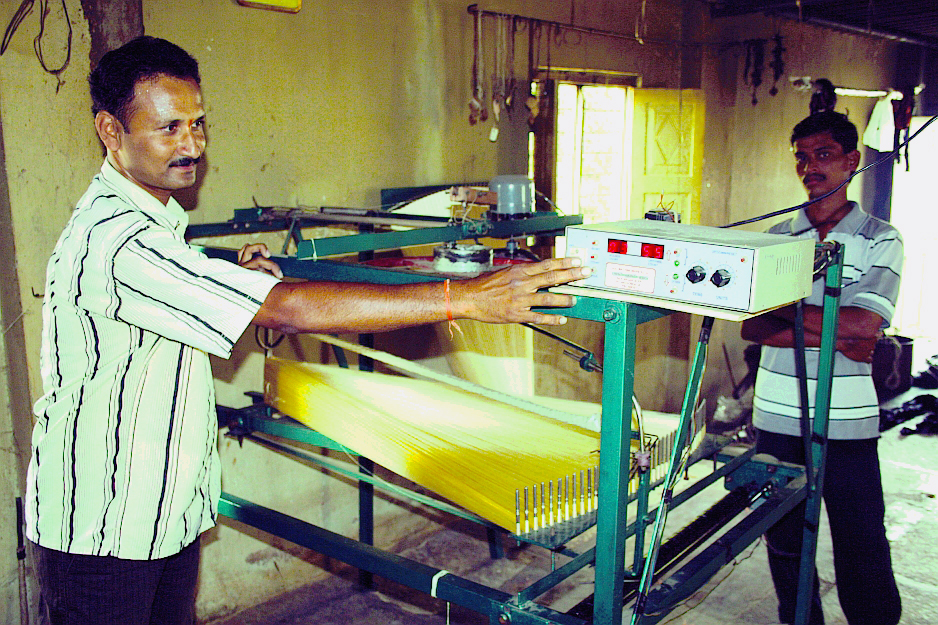A device for faster weaving of Pochampally silk by an innovator from Telangana revives traditional silk sari industry
An innovator from Nalgonda in Telangana has reduced the tedious and cumbersome hand-winding process of yarn for weaving of the famous Pochampally silk, thus reviving the traditional art as well as the silk sari industry on which many in the area are dependent.
The Laxmi Asu Making Machine developed by Shri Mallesham Laxminarayana Chinthakindi has revolutionized the weaving of the Pochampally silk and reduced the drudgery of thousands of weavers involved in the occupation.
With the support of National Innovation Foundation (NIF) – India, an autonomous body of the Department of Science and Technology (DST), Government of India, the ‘Laxmi Asu Making Machine’ has been incubated, and it is used by thousands of weavers to come up with a Pochampalli silk saris.
Making this special silk of Telangana involves an exquisite tradition constituting a special technique called double ikat style of weaving consisting of dyeing prior to weaving. It produces fabrics of a variety of colors and intricate designs. The traditional process involves drudgery and requires a to and fro moving of the hand thousands of times in a span of four-five hours. However, Laxmi Asu Making Machine has resolved this challenge that weavers had faced for centuries. It is a classic example of difference that a well thought of mechanization may bring for common people.
The efforts of Mallesham have helped prevent the slow decay of the ‘Tie & Dye’ tradition. He has triggered the revival of Pochampalli sari industry. The conventional process involved moving hands over a space of one meter up and down around semi-circularly arranged pegs, 9000 times for one sari, demanding high concentration and accuracy. Automation with this machine has now done away with this process. Several women have set up ‘Asu machine centers’ generating immense livelihood opportunities and several thousand were directly relieved of a conventional and a non-productive approach.
Mallesham was inspired to develop the machine by the challenges his mother faced while weaving a sari. In a day, she could only do the Asu for a maximum of two saris, which led to tremendous pain in her shoulders and elbow joints. The pain his mother suffered bothered him a lot. He wondered if there could be an alternative method for Asu that would relieve the physical drudgery for his mother. This led to the birth of the idea of a mechanical device to make the silk-making process easy, just like a power loom replaces a manual loom. As a result of the innovation, employment opportunities and productivity in the village witnessed an all-time high. Not just this, by virtue of improved designs, there is a clear renewed interest by connoisseurs of silk saris. Besides, the large number of girls involved in the industry could save time with by virtue of automation and hence could focus on studies and could spend quality time with their families.
The villages’ unique weaving styles and patterns had received a special focus from the Hon’ble Prime Minister Shri Narendra Modi’s mantra of Vocal 4 Local as a part of Atma Nirbhar Bharat.
The Asu machine developed by Chithakindi Mallesham, a weaver, brought the entire village to the limelight, and now the village has been recognised as the world's best tourism village by the United Nations World Tourism Organization.

Comments
Post a Comment